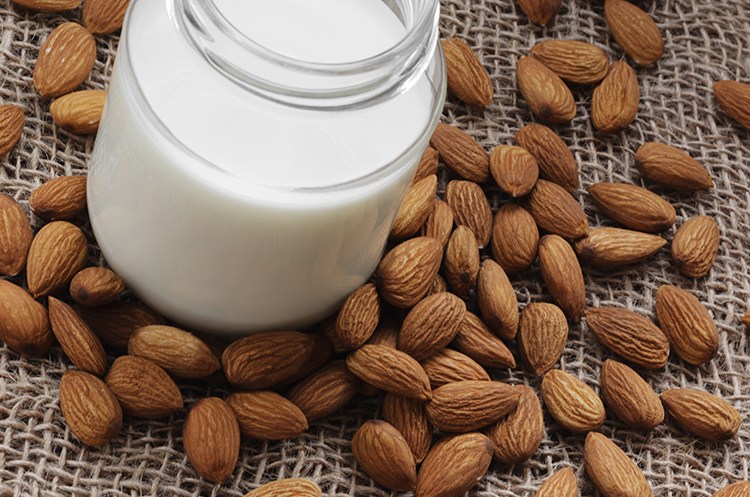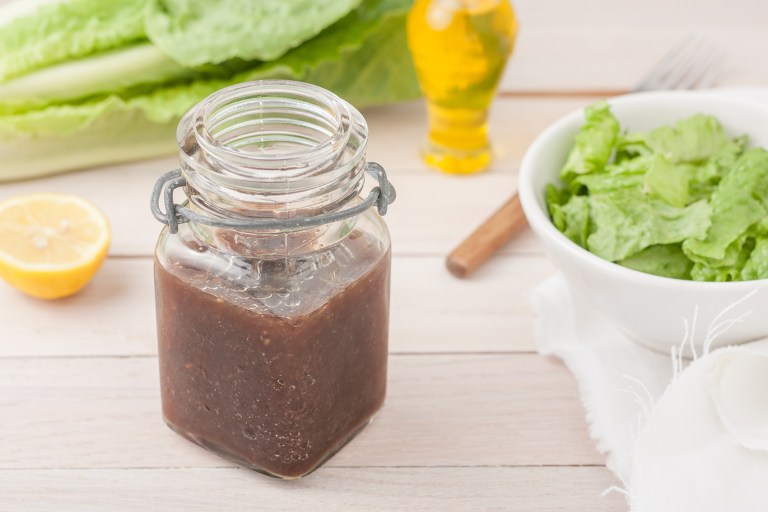Debbie J., MS, RD contributed this article –
What do refrigerated versions of common condiments offer that their shelf-stable (unrefrigerated dry aisle items) counterparts do not? Generally speaking, the refrigerated versions contain a lot less sodium, fewer (or no) preservatives, and often better taste. Blue cheese salad dressing is prime example of how noticeable the differences can be. This is because blue cheese does not sit well at room temperature. In the refrigerated version of blue cheese salad dressing, you can find real chunks of blue cheese in a bath of cream. Yum!
Most health professionals who would say that raw foods are best. Who has time to make everything from scratch, though? Sometimes you just need to grab a sauce, dressing or dip then pour or spoon it onto your food – Presto! Your snack or dinner is enhanced. So why not do so with condiment options that offer better nutritional value?
Below you can see how some popular fresh condiments found in the chilled section stack up versus the options in the dry (preservative packaged) aisle.
Note – In order to maintain objectivity and reduce variables as possible, only products offered in both refrigerated and shelf stable versions from the same manufacturer are being compared in the following examples. Differences in ingredients between the two are highlighted in blue for fresh and in red for preservative packaged shelf-stable foods.

Ranch Dressing
Fresh: Fat 17 gms, Sodium 200 mg, Carbohydrate 2 gms, Protein 1 gm
Soybean oil, Buttermilk, Distilled vinegar, Egg yolk, Salt, Sugar, Dehydrated garlic, Autolyzed yeast extract, Dehydrated onion, Spices, Xanthan gum, Natural flavors
Shelf: Fat 13 gms, Sodium 240 mg, Carbohydrate 1 gm, Protein 0 gm
Soybean oil, Water, Buttermilk, Egg yolk, Sugar, Distilled vinegar, Salt, Phosphoric acid, Modified corn starch, Xanthan gum, Monosodium glutamate, Potassium sorbate, Sodium benzoate, Dehydrated garlic, Spices, Natural flavors, Calcium disodium EDTA, Disodium inosinate, Disodium guanylate

Cream-Style Horseradish
Fresh: Sodium 10 mg, Fat 0 gm
Horseradish, Distilled vinegar, Water, Cream, Salt, Natural flavoring
Shelf: Sodium 40 mg, Fat 1 gm
Water, Soybean oil, Horseradish, Vinegar, Sugar, Food starch, Salt, Egg yolks, Mustard flour, Natural flavor, Lemon juice concentrate, Xanthan gum, Vitamin E, Spices

Balsamic Vinaigrette Dressing
Fresh: Fat 8 gms, Sodium 125 mg, Sugar 1 gm
Water, Soybean oil, Vinegar, Sugar, Olive oil, Maltodextrin, Salt, Dehydrated onion, Balsamic vinegar, Stabilizer (Mono and Diglycerides, Guar gum, and Polysorbate 60), Garlic powder, Spices, Nonfat dry milk, Dehydrated green & red bell pepper, Caramel color, Natural flavor, Xanthan gum, Lemon juice powder, Silicon dioxide
Shelf: Fat 8 gms, Sodium 140 mg, Sugar 2 gms
Water, Soybean oil, Vinegar, High fructose corn syrup, Red wine vinegar, Basil, Salt, Balsamic vinegar, Food starch-Modified, Sodium benzoate, Potassium sorbate, Dehydrated garlic, Caramel color, Xanthan gum, Natural flavor, Oregano, Ground mustard seed, Spices, Calcium disodium EDTA, White wine, Tartaric acid, Citric acid
Sometimes “Fresh” doesn’t necessarily mean chilled…
Not everything needs to be refrigerated before it’s opened. If the concentration of acid (pH 4.5 or less), oil or sugar is high enough, then microbial growth is prevented even at room temperature. This applies to products such as vinegar, hot sauce, cooking oils, and honey. Although most BBQ sauces, ketchups and mustards last longer in the refrigerator after they’re opened, they are fine from the shelf, too. Also, beverages that are aseptically (sterile, air-tight) packaged can be kept at room temperature (but may taste better chilled). For these items, any difference in sodium, sugar or fat is due to different flavors or brands.
The next time you are at the grocery store, take a minute to see if your favorite dressing or dip has a fresh counterpart. For your body and taste buds, finding the fresh version will likely be worth the search!













